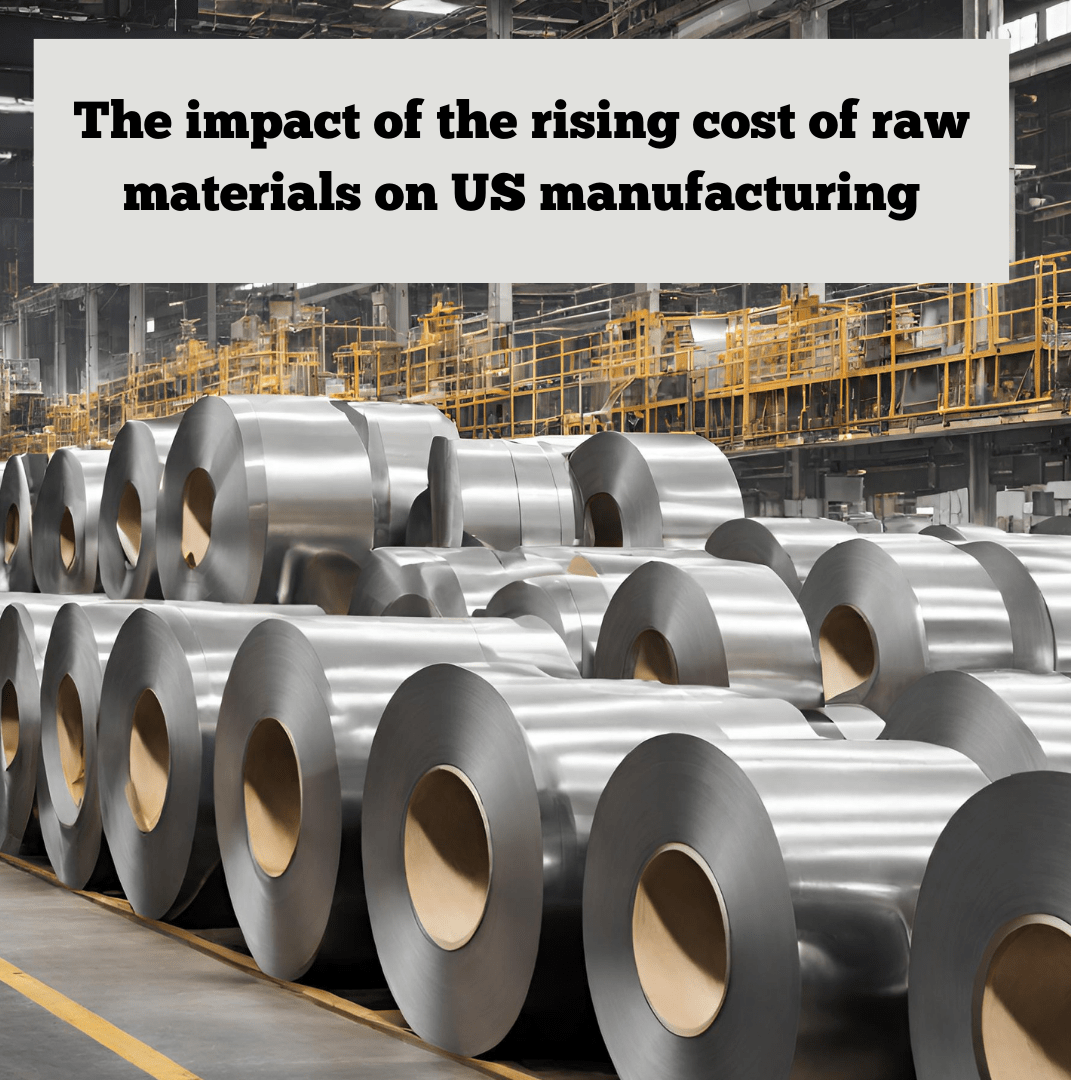In the dynamic landscape of manufacturing, the fluctuation of raw materials costs is a perennial concern that can have far-reaching consequences for businesses across various industries. The impact the rising cost of raw materials has on manufacturing. As the United States grapples with economic shifts and global market dynamics, the recent surge in raw materials prices has emerged as a pressing challenge for manufacturers nationwide. From steel and aluminum to lumber and plastics, the ripple effect of rising raw materials costs is palpable, affecting production processes, pricing strategies, and supply chain dynamics. So, how are US manufacturers navigating these turbulent waters, and what are the implications for the broader economy?

Escalating Raw Materials Costs:
In recent years, US manufacturers have faced mounting pressure as the prices of key raw materials have soared. Factors such as supply chain disruptions, increased demand, geopolitical tensions, and inflationary pressures have contributed to this trend. The cost spikes have been particularly pronounced in industries reliant on commodities like steel, aluminum, copper, and petroleum-based products. As a result, manufacturers are grappling with higher input costs, squeezing profit margins and challenging their competitiveness in both domestic and international markets.
Supply Chain Disruptions:
The surge in raw materials costs has exacerbated supply chain disruptions, compounding challenges for manufacturers already grappling with logistical bottlenecks and inventory shortages. Delays in raw materials procurement, coupled with increased lead times and unpredictable availability, have disrupted production schedules and hindered businesses’ ability to fulfill orders in a timely manner. This has ripple effects throughout the supply chain, impacting downstream manufacturers, distributors, and ultimately consumers.
Pricing Pressures:
To offset the impact of rising raw materials costs, many US manufacturers have been compelled to adjust their pricing strategies. Price increases, though necessary to maintain profitability, can erode consumer purchasing power and dampen demand for manufactured goods. Balancing the need to pass on higher costs to customers with the risk of pricing themselves out of the market poses a delicate balancing act for manufacturers, requiring careful consideration of market dynamics and competitive positioning.
Innovation and Efficiency:
In response to the challenges posed by rising raw materials costs, US manufacturers are increasingly focused on innovation and efficiency improvements to enhance productivity and mitigate cost pressures. This includes investments in technology, automation, and process optimization to streamline operations, reduce waste, and maximize resource utilization. By embracing innovation, manufacturers can enhance their competitiveness, improve product quality, and adapt to evolving market conditions more effectively.
Policy Considerations:
Addressing the root causes of rising raw materials costs requires a multifaceted approach that encompasses both short-term interventions and long-term strategies. Policymakers play a critical role in fostering a conducive environment for manufacturing growth, including promoting domestic production, investing in infrastructure, addressing trade imbalances, and fostering a skilled workforce. Additionally, measures to enhance supply chain resilience and mitigate geopolitical risks can help alleviate the impact of raw materials price volatility on US manufacturers.
Conclusion:
The impact of rising raw materials costs on US manufacturing is profound and multifaceted, posing significant challenges for businesses across the country. As manufacturers navigate this challenging landscape, they must adopt a strategic approach that emphasizes innovation, efficiency, and resilience. By leveraging technology, optimizing operations, and adapting to changing market dynamics, US manufacturers can weather the storm of raw materials price volatility and emerge stronger and more competitive in the global marketplace.
Learn more about accounts receivable factoring
